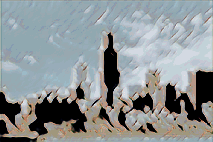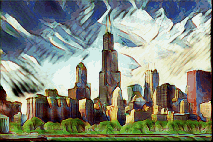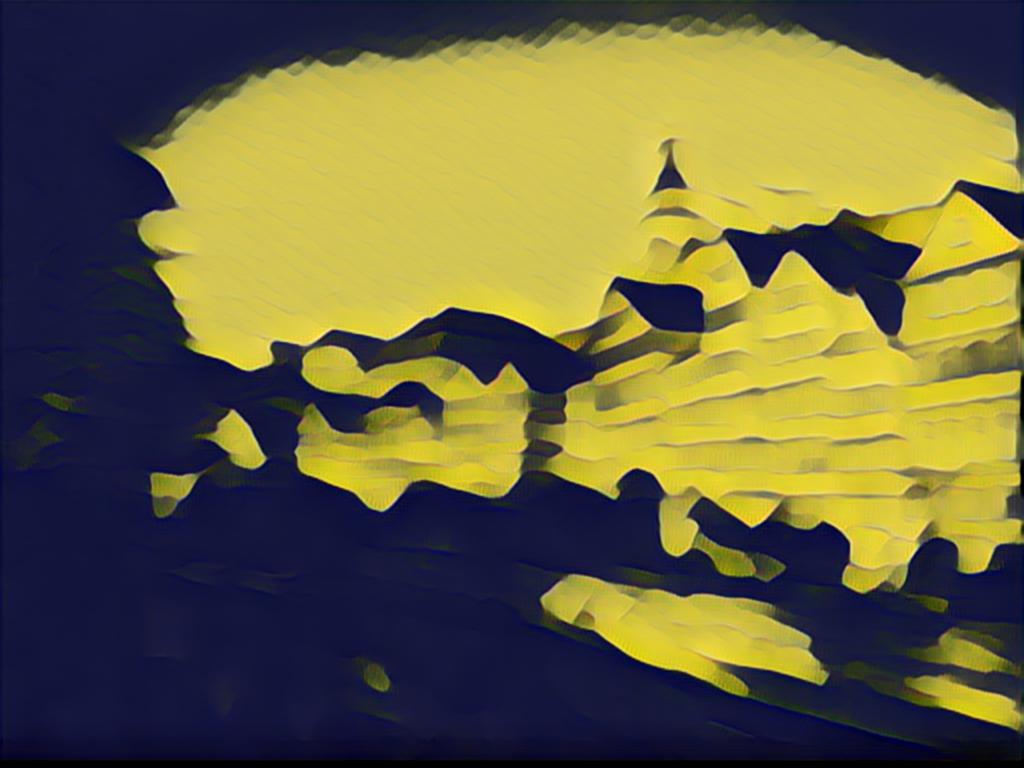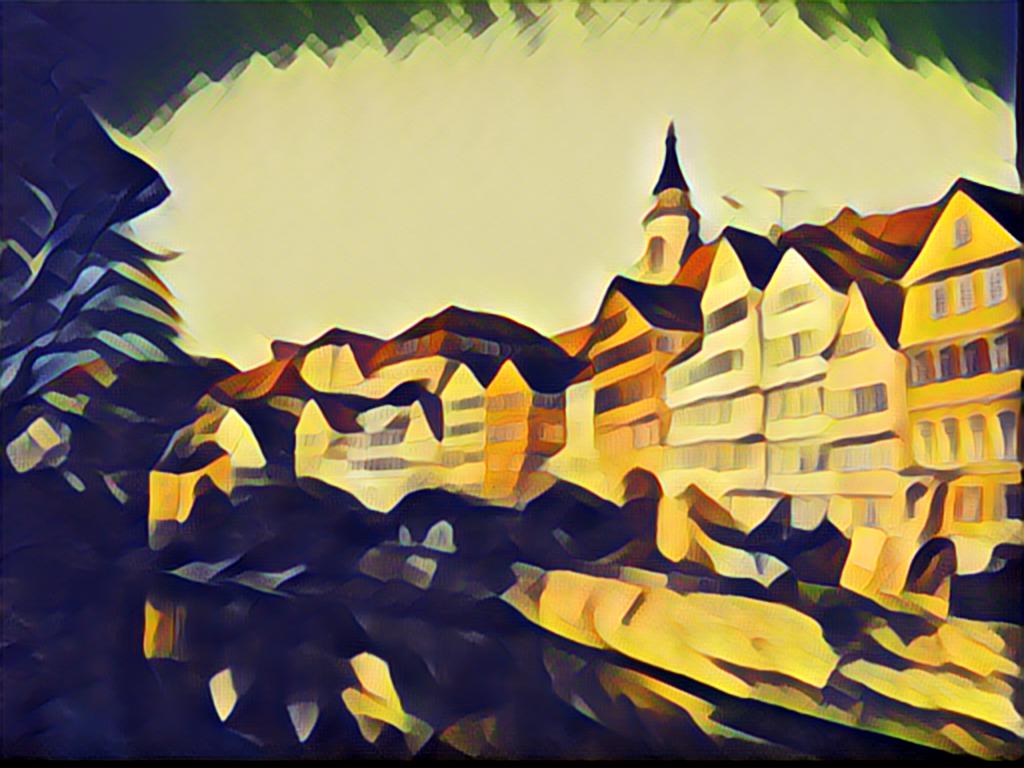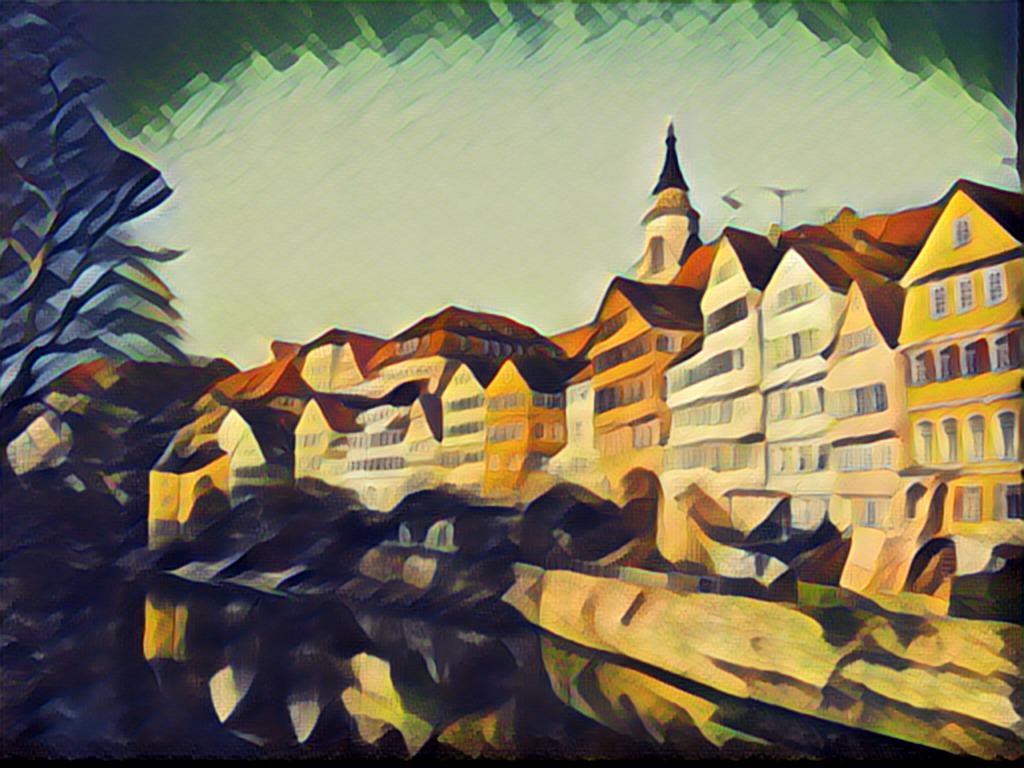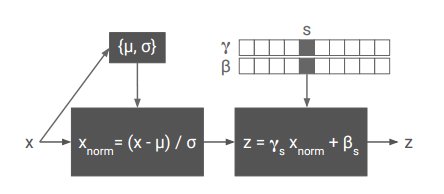Implementation of Google Brain's A Learned Representation For Artistic Style in Tensorflow. You can mix various type of style images using just One Model and it's still Fast!
Figure1. Using one model and making multi style transfer image. Center image is mixed with 4 styleThis paper is next version of Perceptual Losses for Real-Time Style Transfer and Super-Resolution and Instance Normalization: The Missing Ingredient for Fast Stylization. These papers are fast and nice result, but one model make only one style image.
Recommand to download project files (model, vgg, image, etc.) One drive / Dropbox. And Download COCO on your data folder. Example command lines are below and train_style.sh, test_style.sh.
Working Directory
├── MST
│ ├── models
│ │ ├── checkpoint
│ │ ├── xxx.index
│ │ ├── xxx.data
| │ └── xxxx.meta
│ ├── test_result
│ └── train_result
├── images
│ ├── style
│ ├── style_crop
│ ├── test
│ └── crop.py
├── src
│ ├── vgg19.mat
│ └── ...
├── main.py
├── test_style.sh
└── train_style.sh
"-scw, --style_control_weights" is style control argument. "0 0 0 ... 0 0 0 " means weight of "style1 style2 ... style16"
If you want single style
style1 -scw "1 0 0 ... 0 0 0"
style16 -scw "0 0 0 ... 0 0 1"
If you want multi style
0.5 * style1 + 0.5 * style2 -scw "0.5 0.5 0 ... 0 0 0" or "1 1 0 ... 0 0 0"
0.2 * style1 + 0.3 * style2 + 0.4 * style3 -scw "0.2 0.3 0.4 ... 0 0 0" or "2 3 4 ... 0 0 0"
1/16 * (style1 ~ style16) -scw "0.63 0.63 ... 0.63 0.63" or "1 1 1 ... 1 1 1"
python main.py -f 1 -gn 0 -p MST -n 10 -b 16 \
-tsd images/test -sti images/style_crop/0_udnie.jpg \
-ctd /mnt/cloud/Data/COCO/train2014 \
-scw 1 0 0 0 0 0 0 0 0 0 0 0 0 0 0 0 \
Train weight, bias, gamma_0, beta_0. Need 40000 iteration (10 epoch)
python main.py -f 1 -gn 0 -p MST -n 1 -b 16 \
-tsd images/test -sti images/style_crop/1_la_muse.jpg \
-ctd /mnt/cloud/Data/COCO/train2014 \
-scw 0 1 0 0 0 0 0 0 0 0 0 0 0 0 0 0 \
Train only gamma_i, beta_i. Just need 4000 iteration (1 epoch, 1/10 scratch)
You can see that images gradually change to new style.
if you want to train 32-style model, edit main.py and -scw range (16 to 32)
1. parser.add_argument("-scw", "--style_control_weights", type=float, nargs=16 --> 32)
2. -scw 1 2 3 ... 14 15 16 --> -scw 1 2 3 ... 30 31 32
ex) style9
python main.py -f 0 -gn 0 -p MST \
-tsd images/test \
-scw 0 0 0 0 0 0 0 0 1 0 0 0 0 0 0 0
ex) style10
python main.py -f 0 -gn 0 -p MST \
-tsd images/test \
-scw 0 0 0 0 0 0 0 0 0 1 0 0 0 0 0 0
ex) 0.5*style9 + 0.5*style10
python main.py -f 0 -gn 0 -p MST \
-tsd images/test \
-scw 0 0 0 0 0 0 0 0 0 0.5 0.5 0 0 0 0 0 \
ex) 0.33*style9 + 0.33*style10 + 0.33*style11
python main.py -f 0 -gn 0 -p MST \
-tsd images/test \
-scw 0 0 0 0 0 0 0 0 0 0.33 0.33 0.33 0 0 0 0 \
The key of this paper is Conditional instance normalization.
Instance normalization is similar with batch normalization, but it doesn't accumulate mean(mu), variance(alpha). Conditional instance normalization have N scale(gamma) and N shift(beta). N is number of style images. This means when you add new style, you just train new gamma and new beta. See the below code.
def conditional_instance_norm:
...
shift = []
scale = []
for i in range(len(style_control)):
with tf.variable_scope('{0}'.format(i) + '_style'):
shift.append(tf.get_variable('shift', shape=var_shape, initializer=tf.constant_initializer(0.)))
scale.append(tf.get_variable('scale', shape=var_shape, initializer=tf.constant_initializer(1.)))
...
idx = [i for i, x in enumerate(style_control) if not x == 0]
style_scale = reduce(tf.add, [scale[i]*style_control[i] for i in idx]) / sum(style_control)
style_shift = reduce(tf.add, [shift[i]*style_control[i] for i in idx]) / sum(style_control)
output = style_scale * normalized + style_shift
Paper's upsampling method is "Image_resize-Conv". But I use "Deconv-Pooling"
def mst_net:
...
x = conv_tranpose_layer(x, 64, 3, 2, style_control=style_control, name='up_conv1')
x = pooling(x)
x = conv_tranpose_layer(x, 32, 3, 2, style_control=style_control, name='up_conv2')
x = pooling(x)
...
- TensorFlow 1.0.0
- Python 2.7.12, Pillow 3.4.2, scipy 0.18.1, numpy 1.11.2
This project borrowed some code from Lengstrom's fast-style-transfer. And Google brain's code is here (need some install)

